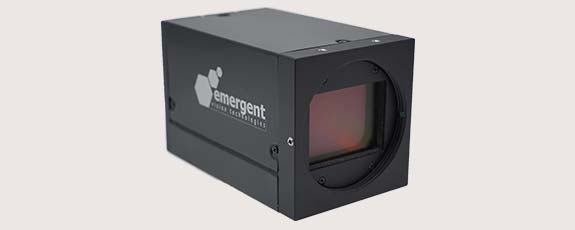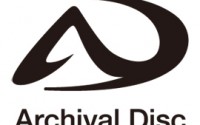What You Should Know About Industrial Cameras
Cameras are available in each day of our lives from speeding cameras that check the speed of the cars to CCTV that record everything that is happening in a building to the cameras integrated into our smartphones. It is obvious these gadgets exist and are an essential part of our lives today. Nonetheless, very few individuals are aware that many cameras are utilized behind the scenes in manufacturing companies across the world.
Industrial cameras are also referred to as machine vision cameras and utilized in inspecting various products from shampoo bottles to headache pills to spark-plugs. The list is flawless because people use industrial cameras in specific industries such as food and beverage, pharmaceutical, electronics, automotive, print, and packaging.
What is an industrial camera?
It is a camera that has been developed to high standards with robust and repeatable performance to tolerate the demands of harsh industrial activities. The industrial cameras are an exceptional generation of cameras that boast the most innovative resistance properties of shock as well as other external forces. When compared to the ordinary cameras, it is notable that the industrial cameras can endure intense vibrations and high temperatures that the standard camera cannot ensure.
For these features, the industrial cameras are the most sought-after gadgets in this century especially in the field of pharmaceutical practices and mining. The art of photography has been part of the history of humanity and the entire society for decades, and now the advent of technology is taking almost everything to a new level. , high data intensity, improvements in quality as well as Ethernet cables are some of the things to look out for when selecting the best industrial camera.
The image quality offered by an industrial camera is higher than that possessed by the standard camera, and this is because users require detailed pictures for specific measurement tasks. The common elements of the conventional digital cameras such as shutter release sound, flash, and viewfinder are not integrated into an industrial camera.
Typically, the camera is initiated by use of an input/output (I/O) cable. Then, software linked to the computer sends a signal to capture a picture. In the standard cameras, this is referred to as the ‘shutter release.’
How Industrial Camera Work
The industrial camera utilizes sensors, software algorithms, and processing hardware to automate mundane or complex visual inspection tasks and specific guide handling device during product assembly. The applications include flaw detection, verification, measurement, identification, and positioning. The industrial camera works tirelessly conducting a hundred percent online inspection, and this result in higher yields increased product quality as well as lower production costs. Continuous product quality and appearance dive consumers satisfaction as well as the market share.
The industrial camera incorporates various crucial components from a sensor that captures an image for inspection to the processing engine that extracts and communicates the result. For any industrial camera to work correctly and offer repeatable results, need to understand how these crucial components work.
The following section will offer you a brief introduction to staging, lighting, optics and cameras, and other crucial components of an excellent industrial camera.
Lighting
It is possible for the human eye to see well over various lighting conditions, but an industrial camera does not boast this ability. It is thus essential to properly light the region being assessed to ensure that the camera sees it clearly. The light should be continuous and regulated so that the light changes observed by the industrial camera system are due to alterations in the parts assessed as opposed to changes in the source of light.
You will need to select the light that amplifies that component of the part that you want to assess and offsets the elements that you do not need to inspect. Usually, poor lighting will make it impossible to read what is required for an image while perfect lighting will make it easier to read the part that you want in a specific component. Selecting the ideal lighting needs some experience and knowledge.
Staging
It is at times called fixturing, and it typically holds the part to be assessed at a specific location in front of the industrial camera for it to be seen. The following are reasons for incorporating staging.
- To find out that the surface of the part that you need to assess is facing the camera. In some scenarios, the parts are rotated to inspect various surfaces.
- To hold the part static for the precise moment needed for the camera to take an image of the region. It is possible for the image to blur if the part moves while the picture is being taken.
- To fasten the processing by placing the part in a location described as a vision appliance. All the industrial cameras should have a fast search to locate the part in the image, and this consumes time. If the stage can always be arranged to put the part in almost the same location, then the industrial camera will know where the part is situated and will find it more easily.
Optics and Lenses
The lens gathers the light transmitted or reflected from the area of assessment and then forms an image in the camera sensor. The ideal lens enables one to see the field of view needed and place the camera at the appropriate working distance from the part being inspected. Picking the right lenses requires one to know the ideal (FOV) field of view and the operating range.
The size of the area that an individual wants to capture is the one which is known as FOV. The operating distance is ideally the distance from the front of the camera to the area under inspection.
The cameras
The camera integrates a sensor that converts light acquired from the lens into an electrical signal. The signals are then digitized into an array of values known as pixels and then processed by a vision appliance to conduct an inspection. The precision of the inspection will depend on the operating distance, FOV, as well as the number of physical pixels found in the camera’s sensor.
The usefulness of industrial cameras
Industrial cameras can get the entire task done for you. As discussed above, industrial cameras have a huge role to play in the field of pharmaceutical and medicine. The cameras monitor the health and progress of the patients in this field of medicine. In businesses, the cameras are employed to enhance the safety of transactions as well as protect sensitive investments.
In simple words, irrespective of the field of life, industrial cameras boast an influential role to play. The industrial cameras will genuinely work wonders when it comes to professionalism. The ideal shooting of HD images for businesses is crucial in delivering competent services.




